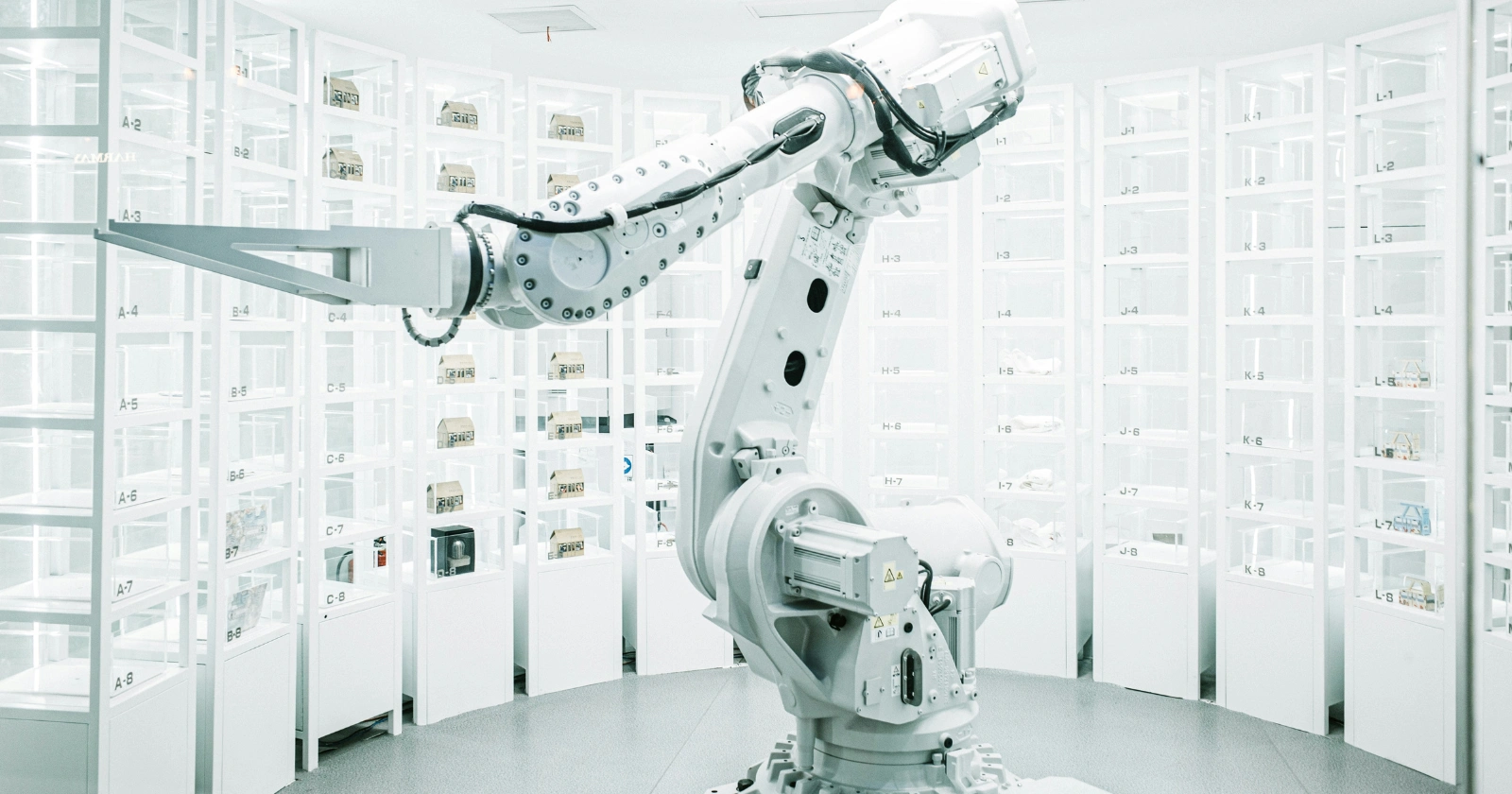The workforce landscape shifts underfoot like sand in a rising tide, pulling young professionals into uncharted waters. Born between 1997 and 2012, those in Generation Z step into a world where artificial intelligence hums quietly in the background, reshaping opportunities before they fully form.
Recent reports paint a stark picture: entry-level positions, once the sturdy first rungs on career ladders, now flicker like distant lights amid a surge in automation. Business leaders across continents cite cost savings and efficiency as they turn to AI tools for tasks that juniors traditionally handled, from data entry to basic analysis. This trend emerges not from isolated anecdotes but from broad surveys, revealing a quarter of executives convinced that most novice duties fall squarely within AI’s reach.
Consider the ripple effects on daily lives. Fresh graduates, armed with degrees in fields like computer science or business, scan job boards only to encounter listings demanding years of experience for roles meant as starting points.
Unemployment rates for those aged 20 to 24 hover around 9.2 percent in key markets, double the national average, according to data from the Bureau of Labor Statistics. Yet this squeeze stems from more than economic slowdowns; it ties directly to AI’s rapid integration.
A Stanford study highlights a 13 percent drop in employment for early-career workers in AI-vulnerable sectors since late 2022, while seasoned professionals see gains. Such disparities fuel a quiet frustration, as young talent questions the value of education in a system that automates the very skills schools emphasize.
At the heart of this transformation lies a paradox. AI promises productivity leaps—76 percent of surveyed leaders anticipate measurable benefits within a year—yet it risks hollowing out the pathways that build expertise. Companies prioritize short-term gains, with annual reports mentioning “automation” seven times more often than “upskilling.” This focus leaves a generation grappling with not just job scarcity but a broader identity crisis: what does ambition mean when the entry gate swings shut?
As global firms from Silicon Valley to Shanghai embed AI into operations, the conversation evolves from fear to strategy, urging a balance between technological promise and human potential.
Automation’s Quiet Takeover
Businesses embrace artificial intelligence with fervor, viewing it as a cornerstone for survival in competitive arenas. Surveys from the British Standards Institution, spanning leaders in seven nations including the United States and United Kingdom, show 41 percent leveraging AI to trim staff numbers.
This move addresses immediate pressures like skills shortages and rising costs, allowing firms to reallocate resources toward innovation. Yet the human cost mounts subtly, as entry-level hires—vital for injecting fresh perspectives—dwindle.
The mechanics unfold in boardrooms and back offices alike. AI handles routine chores such as report generation and customer inquiries, tasks that once served as training grounds. A ResumeTemplates.com poll of 1,000 U.S. hiring managers uncovers that 29 percent of organizations have already swapped junior roles for automated solutions, with another 34 percent mulling the same.
Roles in data analysis, customer service, and research top the list of casualties, where AI’s consistency trumps human variability. This shift accelerates as agentic AI—capable of autonomous actions like booking appointments—enters the fray, potentially transforming 26 percent of job postings on platforms like Indeed.
Key facts underscore the velocity of change. The World Economic Forum’s Future of Jobs Report 2025 projects AI displacing 9 million positions while creating 11 million, a net gain overshadowed by uneven distribution. Entry-level spots bear the brunt, with postings down 35 percent since early 2023 in the U.S., per Fortune analysis. Economists note that while overall unemployment sits at 4.7 percent—a four-year high in Britain—the youth segment suffers disproportionately. This pattern holds across borders, from Australia’s cooling market to Japan’s tech-heavy economy, where 31 percent of leaders scout AI options before posting vacancies.
Entry Doors Slam Shut
Young workers encounter barriers that feel insurmountable, as artificial intelligence redefines the starting line. A British Standards Institution report flags 39 percent of firms reducing junior headcount through AI efficiencies, with 43 percent anticipating further cuts within a year. This erodes the foundational experiences that forge career resilience, leaving graduates to compete in a arena tilted toward the experienced.
Perceptions among hiring managers add layers to the challenge. One in eight deems the average Gen Z candidate unemployable, citing concerns over work ethic and professionalism, according to ResumeTemplates.com. While generational critiques echo past eras—millennials faced similar labels—the current climate amplifies them through AI’s lens. Six in ten managers hesitate to onboard this cohort, favoring tools that deliver predictable outputs without onboarding friction. In tech hubs, Indeed’s survey reveals 38 percent of Gen Z respondents fearing role obsolescence, higher than the 35 percent overall in the sector.
The fallout manifests in stalled trajectories. Entry-level unemployment climbs as firms like Amazon signal workforce shrinkage via AI agents, per Business Insider. Nvidia’s CEO counters with optimism, pointing to data center booms creating trade-school pathways, yet such niches demand swift pivots. Broader data from Randstad shows Gen Z’s average job tenure at 1.1 years early on, driven not by whimsy but necessity in a shrinking pool. This churn risks a talent drought downstream, as mid-level voids emerge from absent novices.
| Impact Area | Pre-AI Baseline (2022) | Current Trend (2025) | Projected Shift (2030) |
|---|---|---|---|
| Entry-Level Postings | Stable growth at 5% YoY | Decline of 35% since 2023 | 68% reduction expected per hiring managers |
| Youth Unemployment Rate (20-24) | 4.6% in U.S. | 9.2% per BLS | Potential rise to 12% in AI-exposed fields |
| AI Adoption in Firms | 20% regular use | 76% anticipate benefits in 12 months | Over 90% integration, per WEF |
| Skills Mentioned in Reports | Upskilling: Frequent | Automation: 7x more common | Emphasis on human-AI hybrid roles |
This table, drawn from aggregated studies like those from Stanford and the World Economic Forum, illustrates the trajectory. It highlights how automation outpaces preparation, urging a reevaluation of entry strategies.
Manager Views Fuel the Fire
Hiring gatekeepers hold sway in this evolving dynamic, their sentiments shaping access for emerging talent. A ResumeTemplates.com survey captures reluctance: only 42 percent of managers express strong willingness to hire Gen Z, with 18 percent linking this group to productivity dips. Such views stem from observed traits like perceived entitlement, yet they intersect with AI’s allure—41 percent rate the technology as more reliable than young hires.
This bias perpetuates a cycle. Leaders, 56 percent of whom feel fortunate to have launched careers pre-AI, overlook the irony in pulling up ladders they once climbed. The British Standards Institution notes 55 percent deem AI’s upsides worth workforce disruptions, prioritizing efficiency over equity.
In tech, Indeed finds 37 percent of roles redefined by generative AI, with 26 percent of workers laid off in its wake. Managers cite faster, error-free outputs as justification, yet MIT research tempers enthusiasm: 95 percent of enterprises report zero return on AI investments.
Broader discourse on platforms like LinkedIn echoes these tensions. Professionals share stories of ghosted applications, while executives defend automation as innovation’s price. A Yale economist cautions against overattributing woes to AI, pointing to macroeconomic chills like low turnover. Still, the sentiment lingers: without intervention, managerial leanings risk alienating a generation primed for contribution.
Skills That Endure
Amid the flux, certain abilities stand resilient against artificial intelligence’s advance. Creativity, empathy, and complex problem-solving—hallmarks of human ingenuity—defy full replication. The British Standards Institution emphasizes nurturing these alongside technical prowess, as machines falter in nuanced collaboration.
Gen Z holds an innate edge here, having grown alongside digital tools. Randstad data shows 75 percent using AI for upskilling, outpacing older cohorts. Fields like healthcare and trades, less prone to automation, see rising demand; Pew Research notes 22 percent of adults questioning college’s worth amid such shifts. Certifications in AI ethics or hybrid project management bridge gaps, turning threats into tools.
Success stories abound. Young developers leverage AI for prototyping, freeing time for innovative designs. Financial experts like Michael Ryan highlight pattern-matching as Gen Z’s strength, advising focus on irreplaceable roles. As 77 percent seek AI-proof careers per social media polls, the pivot toward empathy-driven sectors like counseling or sustainable design gains traction.
Charting Paths Forward
Adaptation demands proactive steps from individuals and institutions alike. Education systems integrate AI literacy, with platforms like Coursera reporting surges in enrollment. Governments, from China’s extended unemployment aids to the EU’s skills union, craft buffers against displacement.
For job seekers, networking trumps applications; LinkedIn’s Aneesh Raman advocates early AI mastery to augment, not replace, efforts. Companies benefit from hybrid models, blending juniors with AI for accelerated growth. Policymakers eye incentives for retraining, countering short-termism evident in report language.
Optimism tempers caution. While 46 percent of Gen Z fret job impacts per Randstad—up from 40 percent last year—adaptation fosters opportunity. Bill Gates urges embracing AI’s empowerment, noting its fun in skill-building. As disruptions settle, a workforce blending human spark with machine precision emerges stronger.
Voices from the Vanguard
Personal narratives illuminate the human side of this shift. A University of Tennessee instructor, Alex Beene, acknowledges Gen Z’s valid fears, likening AI to past tech waves that birthed new roles. Finance founder Michael Ryan frames it as lost apprenticeships, urging rethinking security through trades or entrepreneurship.
On X, threads buzz with raw insights. One user laments, “Gen Z got dealt the worst hand—isolated schooling, then AI snatches jobs,” capturing pandemic scars. Another counters, “Embrace AI to scam the system—automate applications,” highlighting resourceful defiance. CEOs like 9i Capital’s Kevin Thompson draw parallels to NAFTA, warning of hollowed white-collar paths yet spotlighting specialized havens.
These echoes, from Newsweek polls to X debates, reveal resilience. Gen Z’s 28 percent AI stress perception, per Indeed, coexists with proactive upskilling. As one post notes, “The future belongs to skills machines can’t replicate,” a mantra guiding navigation.
Key Conclusion and Analysis
In the grand weave of progress, artificial intelligence threads through economies, tightening some knots while loosening others. Generation Z stands at this crossroads, not as victims of a job-pocalypse but as architects of resilient futures.
Reports from the British Standards Institution and Stanford underscore the urgency: 40 percent of employers eye workforce reductions via automation, yet net job creation looms at 2 million globally by decade’s end, per World Economic Forum forecasts. This duality demands bold action—firms must invest in human capital sevenfold over machines, as annual reports currently skew. Governments extend bridges like apprenticeships, targeting over a million annually in the U.S., while educators pivot curricula toward hybrid literacies that fuse tech with timeless traits like collaboration.
The path ahead favors those who blend caution with curiosity. Young professionals, facing 13 percent employment dips in exposed fields, channel anxiety into agency: 75 percent wield AI for self-advancement, outstripping predecessors. Broader society benefits from this alchemy, as empathy-driven innovations in green tech or community health flourish beyond algorithms’ grasp.
Economists like Yale’s Martha Gimbel remind that slowdowns, not solely AI, chill hiring; a “low hire, low fire” stasis grips markets, with youth finding roles in 12 weeks versus 10 pre-pandemic. Yet history whispers encouragement—internet upheavals of the 1990s birthed e-commerce empires, not mass obsolescence.
Ultimately, equilibrium rests on shared stewardship. Businesses forgo myopic cuts for mentorship pipelines, ensuring mid-level voids do not cascade into leadership deserts. Policymakers champion equitable access, curbing divides where 33 percent lack AI training, per Indeed.
As Gen Z’s average early tenure clocks at 1.1 years, driven by growth quests, a vibrant mosaic forms: trades boom with data center demands, creative sectors thrive on irreplaceable insight. This generation, pattern-matching through disruptions from COVID to code, redefines success not as stability alone but as adaptive mastery.
In harnessing AI’s tide rather than resisting it, opportunities multiply, turning potential peril into collective prosperity. The storm passes, revealing horizons where human ingenuity illuminates the way.
Frequently Asked Questions
What exactly is a job-pocalypse for Gen Z?
A job-pocalypse refers to the rapid decline in entry-level opportunities due to AI automation, leaving young workers with fewer starting points. Reports like the British Standards Institution’s show 25 percent of bosses viewing most junior tasks as automatable, exacerbating youth unemployment to 9.2 percent.
How has AI specifically impacted entry-level hiring?
AI automates routine tasks like data entry and customer support, reducing junior roles by 39 percent in surveyed firms. Stanford research indicates a 13 percent employment drop for ages 22-25 in exposed occupations since 2022, while postings fell 35 percent overall.
Are managers really viewing Gen Z as unemployable?
Surveys reveal one in eight hiring managers consider average Gen Z candidates unemployable, citing work ethic concerns. However, 41 percent rate AI as more reliable, blending generational biases with tech preferences in a ResumeTemplates.com poll of 1,000 U.S. leaders.
Which industries face the biggest AI disruptions for young workers?
Tech, finance, and administrative sectors lead, with 26 percent of Indeed postings poised for radical change. Roles in software development and sales see 53-67 percent task automation, per Bloomberg, hitting Gen Z hardest in white-collar entry points.
Can upskilling protect against AI job loss?
Yes, focusing on creativity and empathy yields resilience. Randstad notes 75 percent of Gen Z use AI for upskilling, targeting hybrid skills. Certifications in AI ethics or project management help, as machines struggle with nuanced collaboration.
Is the youth unemployment rise solely due to AI?
No, macroeconomic factors like low turnover contribute, per Yale economists. Fed Chair Jerome Powell highlights a “no hire, no fire” environment, with AI as a secondary driver amid slowing growth and immigration shifts.
What do experts say about AI’s long-term job effects?
Most predict net gains: World Economic Forum forecasts 11 million new roles versus 9 million lost by 2030. Benefits outweigh disruptions for 53 percent of leaders, though short-term entry-level pain persists without retraining emphasis.
How are companies justifying AI over human hires?
Efficiency and cost savings top reasons, with 76 percent expecting benefits soon. IBM surveys show fear of competitive lag drives adoption, despite 95 percent of firms seeing no ROI yet, per MIT.
Are there positive AI impacts for Gen Z careers?
Absolutely—AI augments tasks, allowing juniors to tackle advanced work sooner. LinkedIn’s Raman notes fresh ideas from youth remain vital, with tools empowering 84 percent of developers in Stack Overflow’s 2025 survey.
What strategies help Gen Z navigate this job market?
Network aggressively, pursue trades or certifications, and master AI tools. Experts like Bill Gates advocate early adoption for empowerment, while pivoting to AI-resistant fields like healthcare builds security amid 68 percent of managers predicting fewer entry roles by 2030.
Gen Z steps into a workforce where AI handles the grunt work, shrinking entry doors and spiking youth joblessness to 9.2%. Leaders cut juniors 39% for efficiency, but human edges like creativity hold firm against the tide. Dive into reports from Stanford and BSI for the full shift.
Read the strategies shaping tomorrow’s hires now.
#GenZJobs #AIWorkforce #EntryLevelCrisis #FutureOfWork #YouthUnemployment #AutomationImpact #CareerResilience #TechHiring #SkillsGap #JobMarketShift



